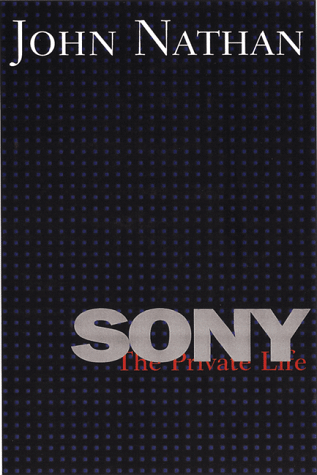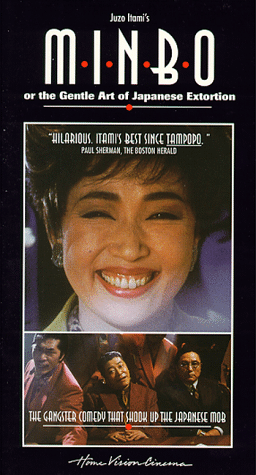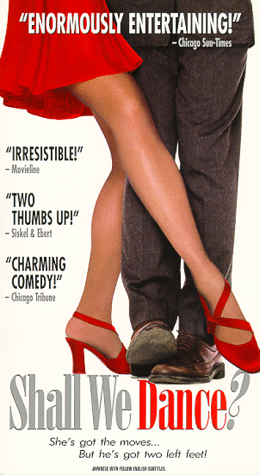It is our
intention to post on this page materials,
methods, techniques and articles that you can use
in your work, provided you maintain our
copyright. The links posted are operational.
Check back frequently to see what is new.
TRAINING MATERIALS:
You are more than welcome to
download, print, reformat, copy and use any of
the materials posted here WITH
THE AGREEMENT THAT YOU WILL MAINTAIN NIPPORICA'S
COPYRIGHT AND URL ON ALL MATERIAL YOU USE.
Good luck and have fun. We trust
you'll find it useful.
A system for
designing training for multicultural groups,
called STADIA, is described in this article.
ARTICLES
Articles and news
on intercultural business topics are archived
under our "News" services, so please click on this
link.
RESOURCES ON JAPAN
Click here to
access a case study on Japanese organizations in
the U.S. Be sure to
retain our copyright and url on the material!
Want to learn some
Japanese phrases? Click here for an MP3 file on
Asking Directions, Transportation and Telephone,
and Clarifying Meaning.
NIKKEI NET
INTERACTIVE introduces the Japan Economic Almanac
2001 - Japan's Information Technology
Revolution.This special section provides
evaluations of the IT Revolution and its impact
on various industriesin Japan. The Almanac
features key facts & figures and coverage of
all aspects of the Japanese economy.NIKKEI NET
INTERACTIVE: http://www.nni.nikkei.co.jp/FR
Some books for
learning more about Japan
Click on the
picture or link to learn more or to order:
 Definitely buy and READ this book!
Written by John Nathan (September 1999), "Sony: The
Private Life" is a
must-read story of insider's tales at Sony is
vivid, detailed, entertaining AND educational.
John is fluent in Japanese language and culture,
and is an excellent writer. These factors produce
a volume that will show you the variety of
personalities within Japanese culture, take you
step-by-step through the decision-making
processes (or lack thereof) at a major Japanese
multinational, let you glimpse inside the psyche
of Akio Morita attempting to be an
"international" person, and give you a
perspective on how the Japanese at Sony
experienced high-level foreigners within the
organization. Definitely buy and READ this book!
Written by John Nathan (September 1999), "Sony: The
Private Life" is a
must-read story of insider's tales at Sony is
vivid, detailed, entertaining AND educational.
John is fluent in Japanese language and culture,
and is an excellent writer. These factors produce
a volume that will show you the variety of
personalities within Japanese culture, take you
step-by-step through the decision-making
processes (or lack thereof) at a major Japanese
multinational, let you glimpse inside the psyche
of Akio Morita attempting to be an
"international" person, and give you a
perspective on how the Japanese at Sony
experienced high-level foreigners within the
organization.
If you have time
to read only one book on Japanese culture, buy
Jack Condon's "With Respect to
the Japanese." It
is easily readable in a couple of hours (at only
92 pages, you can take it on your flight to Tokyo
and still have a full night's sleep), and full of
very meaningful cross-cultural insights and
information. Although written in 1984, a
culture's values change slowly, and most of what
Jack shares with us holds very true in 2000.
 The incredibly popular first novel by
Arthur S. Golden, published September 1999,
"Memoirs
of a Geisha" is
one of those page-turners that you just hate to
put down. An American man writing an
"autobiography" as a Japanese woman?
Extensively researched, this book nevertheless
presents Sayuri, the subject, with rather
westernized thought patterns and communication
styles. The details of life as a geisha in 1930's
Gion, however, and the background the book
provides on Japanese culture, justify the fun
you'll have reading it. The incredibly popular first novel by
Arthur S. Golden, published September 1999,
"Memoirs
of a Geisha" is
one of those page-turners that you just hate to
put down. An American man writing an
"autobiography" as a Japanese woman?
Extensively researched, this book nevertheless
presents Sayuri, the subject, with rather
westernized thought patterns and communication
styles. The details of life as a geisha in 1930's
Gion, however, and the background the book
provides on Japanese culture, justify the fun
you'll have reading it.
Danger and
Opportunity: Resolving Conflict in U.S.-Based
Japanese Subsidiaries. Filled with authentic
incidents of cross-cultural conflict, this book
(published 1998) tells us why cultural conflicts
arise, how they can be mediated, and how the
company can grow from having undergone them.
Cliff Clarke and Doug Lipp present a conflict
resolution model of 1) problem identification, 2)
problem clarification, 3) cultural exploration,
4) organizational exploration, 5) conflict
resolution, 6) impact assessment, and 7)
organizational integration. Call Intercultural
Press at 1-800-370-2665 or USA 207-846-5181.
 Laura
J. Kriska's first-person account of her years as
a young American woman working at Honda Motors in
Japan, "The Accidental
Office Lady" is an
enjoyable as well as informative, though somewhat
outdated, read. Laura
J. Kriska's first-person account of her years as
a young American woman working at Honda Motors in
Japan, "The Accidental
Office Lady" is an
enjoyable as well as informative, though somewhat
outdated, read.
How about watching
a Japanese movie or two?
 One of our favorite movies, "Tampopo" is the story of a young widow
named "dandelion" who struggles to make
the perfect bowl of noodles. With the popularity
of cookbooks as novels these days, and food films
such as Babbette's Feast, the 1986
"Tampopo," about food culture in Japan,
should make for a perfect evening's viewing. Some
sexy scenes may mean "keep the kids
away," but there are some WONDERFUL satires
of Japanese society (the young businessman whose
knowledge of French cuisine offends) and values
(doryoku or effort, senpai/kohai or
mentor/apprentice) in this movie. Well worth
seeing and thinking about. Often called the first
Japanese "noodle western," you'll have
loads of laughs despite the English subtitles. One of our favorite movies, "Tampopo" is the story of a young widow
named "dandelion" who struggles to make
the perfect bowl of noodles. With the popularity
of cookbooks as novels these days, and food films
such as Babbette's Feast, the 1986
"Tampopo," about food culture in Japan,
should make for a perfect evening's viewing. Some
sexy scenes may mean "keep the kids
away," but there are some WONDERFUL satires
of Japanese society (the young businessman whose
knowledge of French cuisine offends) and values
(doryoku or effort, senpai/kohai or
mentor/apprentice) in this movie. Well worth
seeing and thinking about. Often called the first
Japanese "noodle western," you'll have
loads of laughs despite the English subtitles.
 Directed by Itami Juzo (as is
"Tampopo"), who was attacked by a
yakuza (Japanese mafioso) in 1992 after releasing
this film. "Minbo" chronicles a hotel staff's
efforts to rid themselves of yakuza. As usual,
Itami bounces among several side stories and the
main story, a common Japanese storytelling
technique (kishotenketsu). Some insights into the
Japanese legal system, the strengths of Japanese
women, make the film educationally worthwhile.
How about an evening with "Minbo" and
then Fox's "The Sopranos?" Any
cross-cultural comparisons you'd like to share? Directed by Itami Juzo (as is
"Tampopo"), who was attacked by a
yakuza (Japanese mafioso) in 1992 after releasing
this film. "Minbo" chronicles a hotel staff's
efforts to rid themselves of yakuza. As usual,
Itami bounces among several side stories and the
main story, a common Japanese storytelling
technique (kishotenketsu). Some insights into the
Japanese legal system, the strengths of Japanese
women, make the film educationally worthwhile.
How about an evening with "Minbo" and
then Fox's "The Sopranos?" Any
cross-cultural comparisons you'd like to share?
 Very popular around the world, what
better way to learn about Japanese communication
and conflict resolution styles than by watching
"Shall We Dance?" Chronicling the hidden life of a
"salaryman" who attends dance classes
in the evening and lusts after his teacher, we
see how his wife deals with her suspicions about
what he's up to. A wonderful
"climactic" scene in the couple's home,
when she "confronts" her husband.
Compare that with the dance teacher's anger at
her father, the school's owner, in an earlier
scene! Very popular around the world, what
better way to learn about Japanese communication
and conflict resolution styles than by watching
"Shall We Dance?" Chronicling the hidden life of a
"salaryman" who attends dance classes
in the evening and lusts after his teacher, we
see how his wife deals with her suspicions about
what he's up to. A wonderful
"climactic" scene in the couple's home,
when she "confronts" her husband.
Compare that with the dance teacher's anger at
her father, the school's owner, in an earlier
scene!
|